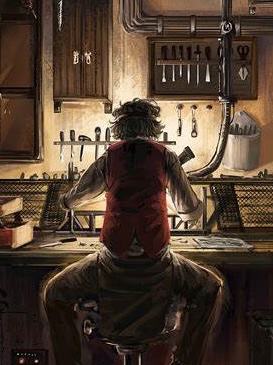Howdy, Stranger!
It looks like you're new here. If you want to get involved, click one of these buttons!
Categories
- 241.3K All Categories
- 22 >> Start Here <<
- 12 New Members
- 8 FAQs
- 86.6K Gear
- 39.5K Guitar
- 3.4K Acoustics
- 1.3K Bass
- 14.6K Amps
- 17.2K FX
- 265 Digital & Modelling
- 765 Other Instruments
- 8.2K Making & Modding
- 419 Gear Reviews
- 107 Guitar Reviews
- 73 Amp Reviews
- 118 FX Reviews
- 87 Other Reviews
- 748 Made in the UK
- 972 Theory
- 1.8K Technique
- 2.1K Live
- 3.2K Studio & Recording
- 2.1K Making Music
- 218 Events
- 15 Guitar Show 2018
- 829 Plug My Stuff
- 105K Classifieds
- 41K Guitars £
- 2.8K Acoustics £
- 138 LH Guitars £
- 895 Basses £
- 10.5K Parts £
- 18.3K Amps £
- 34K FX £
- 2.8K Studio & Rec £
- 6.1K Misc £
- 465 Personnel
- 54.7K Chat
- 36.5K Off Topic
- 1.1K Tributes
- 6.6K Music
In this Discussion
Become a Subscriber!
Subscribe to our Patreon, and get image uploads with no ads on the site!
HB Telecaster
 Roland
Frets: 8701
Roland
Frets: 8701
This has been a long time in gestation, but I'm finally getting around to entering the 2015 modding challenge. The one type of guitar I've often wanted, but never got round to owning, is a Telecaster. So this seems the ideal opportunity.
This much I know. It will have a 22 fret rosewood fretboard, because I don't like the stickiness of varnished maple. I find it hard enough switching between 22 and 24 frets without introducing another variable. It will have single coils, because all my other guitars have humbuckers, and it's time I had a change. Lastly it will have a modern six saddle bridge, rather than the three screw type.
Having looked at the HB range I've decided to start with the Telecaster kit. I'm hoping this isn't sailing too close to the rules. Many of the other models seem to have maple fretboards, or 21 frets, or humbuckers, or f holes. Also, it seems a shame to buy a more expensive model knowing that I will be replacing many of the parts.
More than that I cannot say. I like the look of natural wood grain, but the finish will depend on the quality of the wood that turns up, and whether I've got the courage to try veneer. I'm toying with the idea of making the bridge plate and pickups myself, because I used to like doing things like that when I was a teenager. I'm persuading myself not to add piezos and a synth circuit on the basis that it will cost five time as much as the basic guitar.
Oh, and I haven't actually ordered it yet.
Tree recycler, and guitarist with https://www.undercoversband.com/.
0 LOL 0
LOL 0 Wow! 0
Wow! 0 Wisdom
Wisdom
 LOL 0
LOL 0 Wow! 0
Wow! 0 Wisdom
Wisdom Base theme by DesignModo & ported to Powered by Vanilla by Chris Ireland, modified by the "theFB" team.


Comments
Instagram
Nil Satis Nisi Optimum